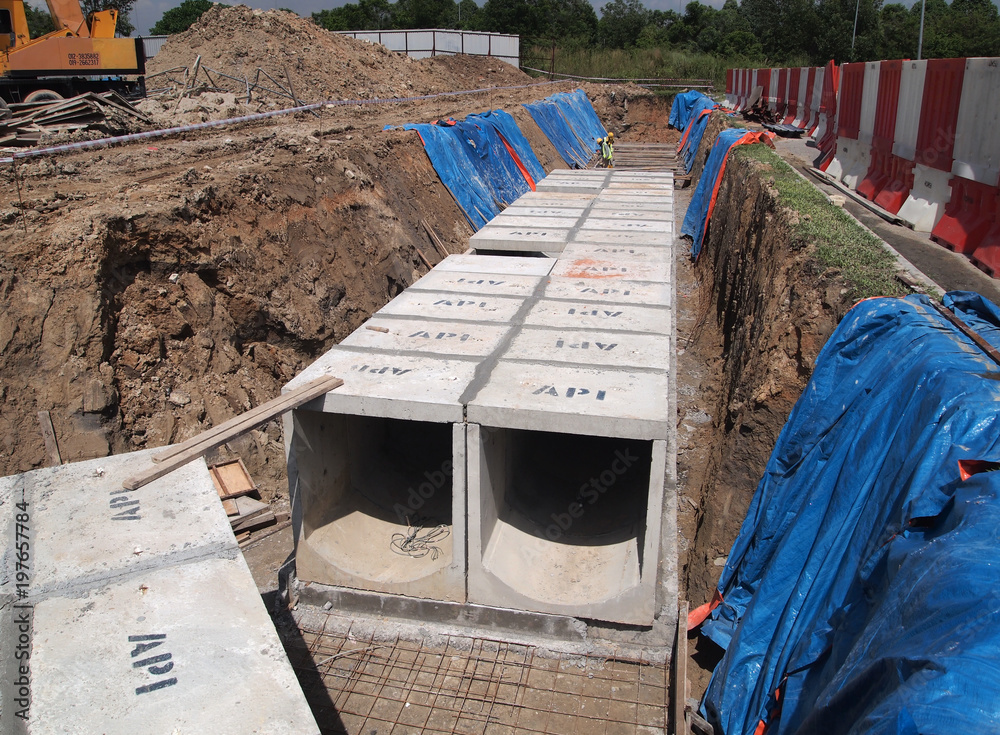Contact Us
RoadVision AI
Private Limited
Office No. 308 & 310, B Block
Ansal Chamber - 1, Bhikaji Cama Place,
Near Engineers India Limited (EIL) Bhawan, New Delhi - 110066
© 2024 | RoadVision AI | All rights reserved
The IRC Code IRC:122-2017 provides comprehensive guidelines for the construction of precast concrete segmental box culverts (PCBC). These structures are essential for facilitating the passage of water, vehicles, and pedestrians beneath roads, railways, and embankments. With the increasing demand for efficient and cost-effective construction methods, the IRC Code outlines best practices that ensure durability, safety, and functionality.

Precast concrete segmental box culverts are versatile structures manufactured off-site and transported to the construction location. They are designed to provide a reliable conduit for stormwater drainage, utility conduits, and even as underpasses for vehicles and pedestrians. The use of precast elements significantly reduces construction time, allowing for rapid installation and minimizing disruption to the surrounding environment.
The IRC Code emphasizes the importance of adhering to specific construction methodologies to ensure the integrity and longevity of precast concrete box culverts. Here are some critical aspects:
There are two primary methods for casting PCBCs:
Proper curing is vital for achieving the desired strength and durability of the concrete. The IRC Code recommends various curing methods, including moisture curing, steam curing, and membrane curing, to ensure that the concrete reaches its specified compressive strength.
The IRC Code outlines strict guidelines for the handling, transportation, and installation of precast units. This includes using appropriate lifting equipment, ensuring safe storage, and following proper loading procedures to prevent damage during transit.
The installation process must be meticulously planned. The first box segment's placement is crucial, as it sets the alignment for subsequent segments. Backfilling should be done evenly and carefully to avoid damaging the culvert. The IRC Code specifies that construction machinery should not operate over the culvert until adequate backfill is in place.
Quality control is paramount in the production of precast concrete box culverts. The IRC Code mandates that all precast units be manufactured under a certified quality management system. This includes regular testing of materials, inspection of finished products, and adherence to specified tolerances.
While precast concrete box culverts require minimal maintenance, routine inspections are essential to ensure their longevity. The IRC Code recommends pre- and post-monsoon inspections to check for issues such as silt deposition, scour, and structural integrity. Timely repairs and maintenance can prevent more significant problems down the line.
The IRC Code IRC:122-2017 serves as a vital resource for engineers, contractors, and project managers involved in the construction of precast concrete segmental box culverts. By following these guidelines, stakeholders can ensure the successful implementation of these structures, contributing to safer and more efficient infrastructure development.
RoadVision AI is revolutionizing road infrastructure development and maintenance with its innovative solutions powered by computer vision AI. By leveraging advanced technologies, the platform conducts comprehensive road condition monitoring and traffic surveys, enabling early detection of surface issues like potholes and cracks for timely repairs and enhanced roads. Through traffic congestion analysis, RoadVision AI provides data-driven insights to address traffic congestion challenges and optimize road usage. With a focus on building smarter and more efficient road infrastructure, RoadVision AI ensures full compliance with IRC Codes, helping engineers and stakeholders reduce costs, minimize risks, and improve road safety and transportation efficiency.